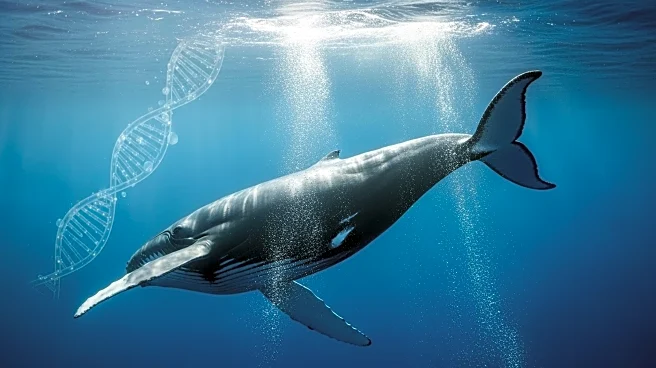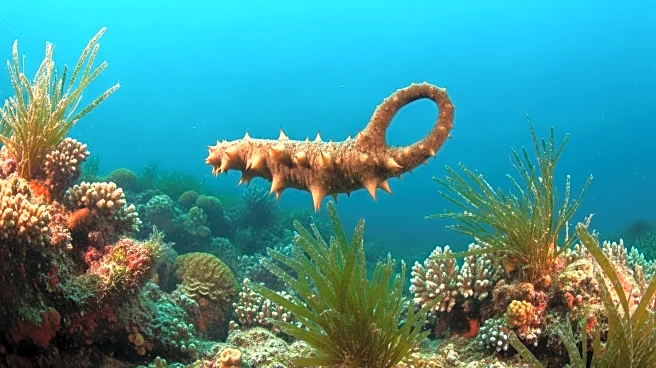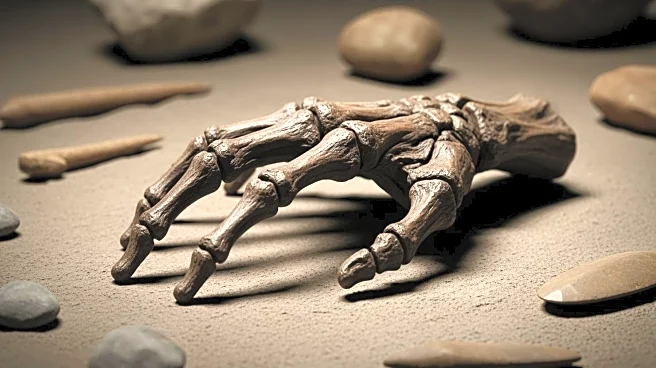What's Happening?
Recent scientific research has identified the loss of the β3-adrenergic receptor gene in cetaceans, which may be linked to their thick blubber and evolutionary adaptations during the Oligocene period.
The study utilized a gene loss pipeline to screen for disruptions in gene coding sequences in cetaceans, specifically focusing on the common bottlenose dolphin and sperm whale. The research involved mapping human protein sequences to cetacean genomes and examining for premature stop codons and frameshifts. The findings suggest that the loss of this gene may have played a role in the adaptive evolution of cetaceans, contributing to their unique physiological traits such as thick blubber.
Why It's Important?
Understanding the genetic basis of cetacean adaptations provides valuable insights into their evolutionary history and ecological success. The loss of the β3-adrenergic receptor gene may have facilitated the development of thick blubber, aiding in thermoregulation and buoyancy, which are crucial for survival in aquatic environments. This research contributes to the broader field of evolutionary biology, offering potential applications in conservation efforts and the study of genetic adaptations in other species. It also highlights the importance of genomics in uncovering the mechanisms behind species evolution.
What's Next?
Further research may explore the implications of gene loss in cetaceans and its impact on their physiology and behavior. Scientists may investigate other genetic factors contributing to cetacean adaptations, potentially leading to new discoveries in marine biology and conservation strategies. The study's findings could prompt discussions on the role of genetic mutations in evolutionary processes and the potential for genetic engineering in conservation efforts.
Beyond the Headlines
The research raises ethical considerations regarding genetic manipulation and conservation strategies. It also highlights the complexity of evolutionary processes and the interplay between genetics and environmental factors. The study may inspire discussions on the role of scientific research in understanding and preserving biodiversity, emphasizing the importance of interdisciplinary approaches in addressing ecological challenges.











